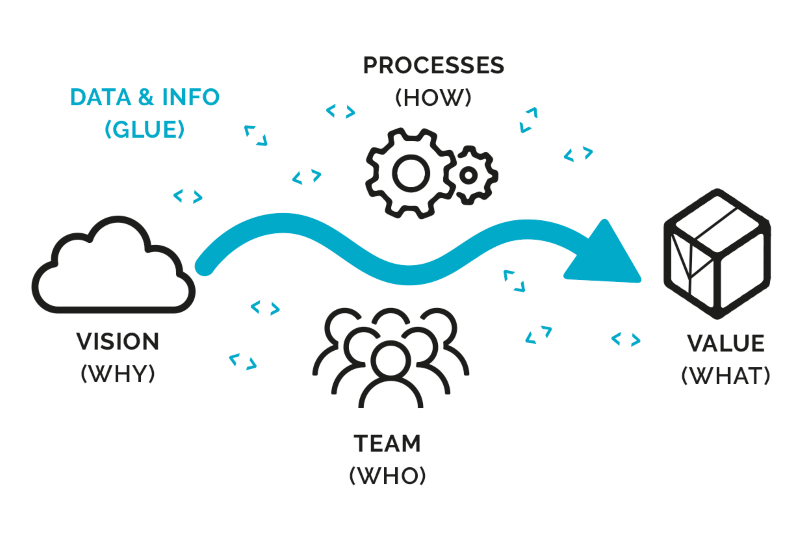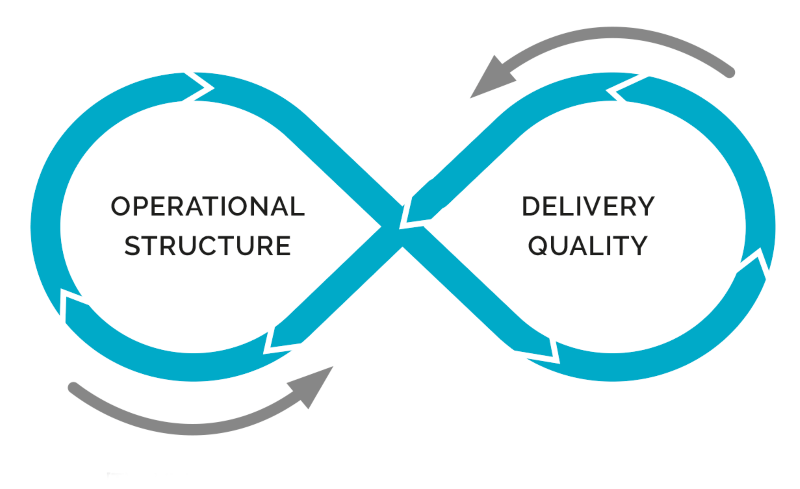Vision to Value Framework
What is the Vision to Value Framework?
There’s no recipe to success for building a great tech company. But, some companies certainly succeed more quickly and easily than others. Luis Gomes de Abreu, co-founder of Nmbrs, attributes some of that success to technical operations. His view frames operations as an enabler, functionally setting an organization and its teams up to deliver great products to customers.
Your highly motivated teams continuously deliver an innovative product that customers love, on time, within the budget and regulations.
Luis Gomes de Abreu
The Vision to Value Framework optimizes this concept, sharing repeatable components necessary to strong and sustainable operations. This framework was designed and optimized over 10 years, as Luis used it in his own organization, Nmbrs. It’s designed to help anyone create the structure to scale, deliver quality, and deliver speed.

The 5 pillars
- Vision and Strategy – Strategy is the heart of your business. It defines not just what you do but why you do it. This allows you to align your organization with clear goals and strategies at a high level.
- Work management – Work management is a crucial aspect of operations. It affects both day-to-day activities and long-term strategy. Here, you must define activities contributing to delivering value for the customer and to delivering company vision.
- Process Management – Process management involves defining how you want to perform work. This involves creating concrete roles, responsibilities, and processes. It also means defining interactions, collaboration, and tooling.
- People and structure – This pillar of the operational model – people and structure – is about team management. Good team management requires having a defined purpose, scope, and strategy in place for your teams.
- Data and Information Management – Data and information management is the figurative glue holding your operational model together. It functions to connect and foster communication and quality management between every other pillar of the framework.

The 7 qualities
Understanding what you’re aiming for is a crucial aspect of optimizing operations. Each of the 7 qualities describes an outcome and a goal. You should use them when designing operations and when assessing your progress.
- Product Quality – The organization outputs a product that customers like, solves their needs, and is easy to sell. The product is high quality (few bugs), has working features, performs well, and is easy to use.
- Service Quality – The organization uses tools like internal escalations, monitoring, quick response times, and SLAs to output a service that customers are happy with.
- Development Velocity – The product evolves at a pace that meets customer, stakeholder, and market expectations.
- Team Motivation – Teams are happy, empowered and take initiative.
- Innovation – There is room to try new things and new experiments frequently succeed in making the product better so that it continues to adapt.
- Cost Effective – All development and running costs, including all personnel, fit into the organization’s budget.
- Compliant – Solutions comply with local regulations such as GDPR and compliance standards like ISO and ISAE